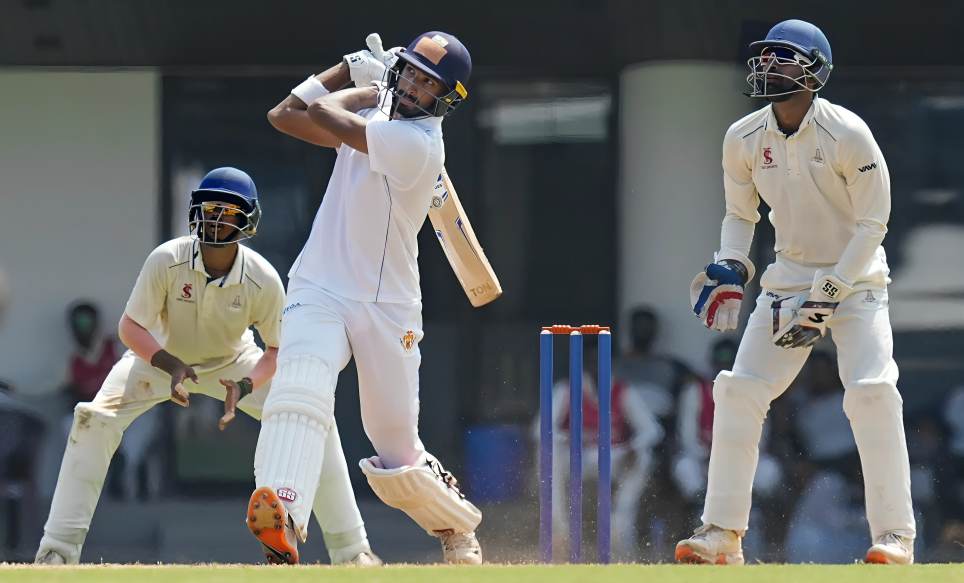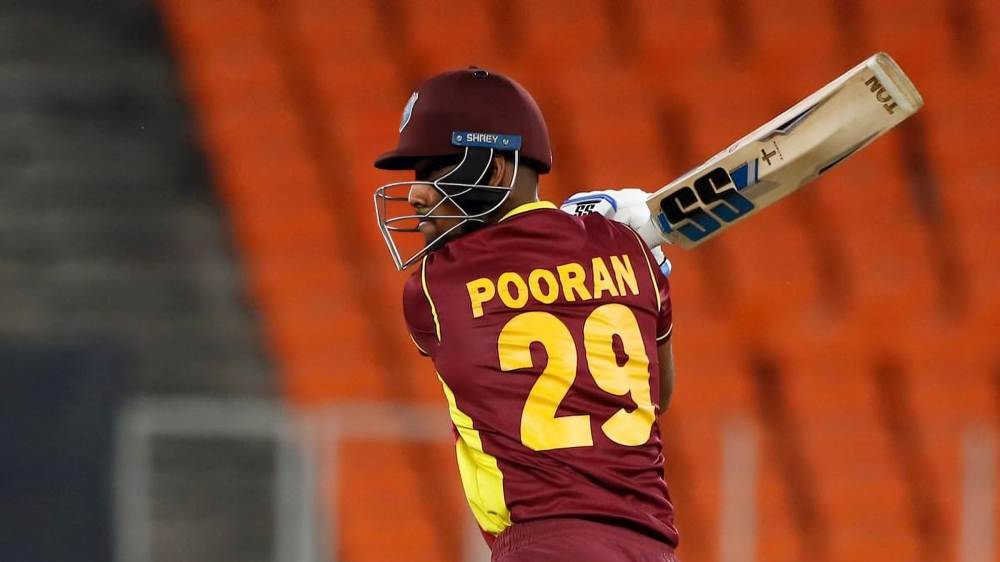Technical Aspects: Australia is renowned for its challenging and diverse cricketing conditions, which include fast and bouncy pitches, unpredictable weather, and scorching heat. To thrive in this environment, a batsman must possess specific technical skills and adapt their game accordingly. In this article, we will delve into the technical aspects that make a batsman successful in Australian conditions, breaking down the skills needed to perform consistently well across various pitches and against fast bowlers.
Table of Contents
- Overview of Australian Cricket Conditions
- Key Technical Skills for Batsmen in Australia
- 2.1. Footwork
- 2.2. Batting Stance and Grip
- 2.3. Shot Selection
- 2.4. Defensive Technique
- 2.5. Handling the Bounce
- Playing Against Fast Bowlers
- Playing on Different Types of Australian Pitches
- 4.1. Hard, Fast Tracks
- 4.2. Spinners’ Pitches
- Mental and Tactical Aspects
- Training and Preparation for Australian Conditions
- Challenges for Foreign Batsmen in Australia
- Conclusion
Technical Aspects: Overview of Australian Cricket Conditions
Australia is home to some of the most challenging cricket conditions in the world, characterized by fast and bouncy pitches, particularly in cities like Melbourne, Sydney, and Brisbane. The weather can also have a significant impact on conditions, with extreme heat sometimes creating cracks in the pitch, making it uneven. In contrast, the humid conditions of the subcontinent and the dry, dusty pitches of South Africa are different from the typical challenges found in Australia.
Table 1: Key Features of Australian Cricket Conditions
| Feature | Details |
|---|---|
| Pitch Bounce | Australian pitches often offer unpredictable bounce, with faster and higher bounce compared to other regions. |
| Pitch Pace | The ball travels faster off the pitch, making timing and footwork critical for success. |
| Weather | Extreme heat during the summer months, with occasional rain impacting play. |
| Crowd and Pressure | Australian crowds are known for their intensity, adding mental pressure on the batsman. |
Understanding and adapting to these conditions is essential for any batsman to succeed in Australia.
Key Technical Skills for Batsmen in Australia
Success as a batsman in Australia requires mastering specific technical skills. Below are some of the most critical aspects.
2.1. Footwork
Footwork is arguably the most important aspect of batting in Australian conditions. Due to the pace and bounce, batsmen must move quickly and decisively to meet the ball. Proper footwork ensures better balance, control, and the ability to play both front- and back-foot shots.
- Moving Forward: Australian pitches often demand precise front-foot play, especially when facing fast bowlers. Stepping forward to meet the ball early helps reduce the impact of excessive bounce.
- Back-foot Play: When facing deliveries with extra bounce, a batsman needs quick reflexes and solid back-foot play, often relying on cutting or pulling.
Table 2: Footwork Techniques for Australian Conditions
| Footwork Type | Usage |
|---|---|
| Forward Play | Allows batsmen to negate the bounce and play attacking shots, especially on fast, bouncy pitches. |
| Backfoot Play | Crucial for handling deliveries that rise sharply or are short-pitched. Helps in playing cut and pull shots. |
| Quick Lateral Movement | Helps in adjusting for deliveries that swing or seamer-friendly conditions. |
2.2. Batting Stance and Grip
A batsman’s stance and grip play a huge role in determining how effectively they can respond to Australian conditions.
- Stance: A balanced and relaxed stance allows for quick adjustments to the varying bounce of Australian pitches. The batsman should remain slightly crouched and ready to play both on the front and back foot.
- Grip: A secure grip is necessary for controlling the bat against fast, swinging deliveries. Batsmen often prefer a slightly more relaxed grip when playing on Australian pitches to absorb the shock of the ball’s pace and bounce.
Table 3: Batting Stance and Grip Adjustments for Australian Conditions
| Aspect | Details |
|---|---|
| Stance | A slightly open stance helps with both front- and back-foot play. |
| Grip | A firmer grip for fast bowlers, especially when playing bouncers. A relaxed grip helps during spin play. |
| Head Position | The head should be steady and balanced, allowing the batsman to judge the line and length effectively. |
2.3. Shot Selection
Given the speed of Australian pitches, shot selection is critical. A batsman must quickly decide between playing an attacking or defensive shot, based on the ball’s bounce and pace.
- Attacking Shots: On flatter, faster pitches, batsmen can play cover drives, pull shots, and square cuts. The key is playing these shots with timing rather than over-aggression.
- Defensive Shots: Playing the defensive shot requires solid technique, especially when facing fast bowlers. The shot should focus on soft hands, allowing the ball to either defend or run down to the boundary.
Table 4: Key Shot Selections for Australian Conditions
| Shot | Ideal Situation |
|---|---|
| Cover Drive | Perfect for delivering precise and attacking shots off the front foot. |
| Pull Shot | Crucial for dealing with short-pitched deliveries, especially from fast bowlers. |
| Square Cut | Effective against short deliveries, particularly when there is bounce. |
| Leave | Essential for leaving deliveries outside off-stump, allowing the batsman to wait for a better ball. |
2.4. Defensive Technique
Defending the ball in Australia requires strong technical skills due to the pace and bounce. The batsman should be ready to play both defensive strokes with soft hands and aggressive strokes with authority.
- Soft Hands: Playing with soft hands helps absorb the pace of the ball, reducing the risk of an edge.
- Staying in Line: Ensuring the bat is in line with the ball when defending is critical, especially when facing fast bowlers.
Table 5: Defensive Techniques for Australian Conditions
| Defensive Technique | Details |
|---|---|
| Soft Hands | Playing with soft hands helps in controlling the ball’s movement off the bat. |
| High Elbow | Ensures the bat is in line with the ball, helping with proper shot execution. |
| Stay Side-on | A side-on stance helps with defending deliveries that rise or swing. |
2.5. Handling the Bounce
One of the most challenging aspects of batting in Australia is the unpredictable bounce. Fast and bouncy pitches in places like The Gabba (Brisbane) and Adelaide Oval require the batsman to anticipate and react to high deliveries.
- Short-Pitched Deliveries: Batsmen must quickly identify short-pitched deliveries and be ready to either pull, hook, or leave the ball.
- Head Position: Maintaining a solid head position and watching the ball all the way through helps adjust to deliveries with excessive bounce.
Table 6: Techniques to Handle Bounce in Australian Conditions
| Technique | Explanation |
|---|---|
| Backfoot Play | Vital for handling short-pitched deliveries, often using the pull or hook shot. |
| Anticipating Bounce | A batsman needs to quickly judge the length and bounce of the ball. |
| Hook and Pull Shots | Effective for dealing with rising deliveries, but should be played with control. |
Playing Against Fast Bowlers
Australia’s pitches are often home to some of the quickest bowlers in world cricket, including the likes of Mitchell Starc, Pat Cummins, and Josh Hazlewood. A successful batsman must be able to face high-speed deliveries effectively.
- Keeping the Ball Under Control: Fast bowlers often generate bounce, meaning a batsman must control the shot to avoid edges.
- Short-Pitched Delivery Handling: A combination of quick reflexes and decisive footwork is essential when dealing with short-pitched balls.
Playing on Different Types of Australian Pitches
4.1. Hard, Fast Tracks
On hard, fast wickets like those in Brisbane and Melbourne, batsmen need to employ aggressive footwork and quick reflexes to handle the extra bounce and pace.
4.2. Spinners’ Pitches
Technical Aspects: Although Australia is known for its pace, certain regions like Sydney and Adelaide can offer turn. Batsmen must adjust their footwork and shot selection to negotiate spin effectively.
Technical Aspects: Mental and Tactical Aspects
Technical Aspects: A batsman’s mental approach is key to succeeding in Australian conditions. Maintaining focus, patience, and confidence, especially in high-pressure situations like battling bouncy deliveries, is essential.
- Building Partnerships: Long innings require solid partnerships to wear down the bowlers.
- Adaptability: A batsman must continuously adjust to the conditions, whether it be changes in pitch behavior or weather.
Technical Aspects: Training and Preparation for Australian Conditions
Technical Aspects: Preparing for Australian conditions requires focused training:
- Fitness and Agility: High-speed bowling and long days in the field demand good fitness.
- Simulation of Bounce: Training on artificial pitches with additional bounce can help a batsman get used to the conditions.
Technical Aspects: Challenges for Foreign Batsmen in Australia
Technical Aspects: Foreign batsmen often struggle to adapt to Australian pitches due to the high bounce and fast pace. The psychological pressure of dealing with hostile conditions, combined with the technical difficulties, can be overwhelming. However, with sufficient preparation, foreign batsmen can succeed.
Technical Aspects: Conclusion
Technical Aspects: Becoming a successful batsman in Australian conditions requires a combination of technical proficiency, mental resilience, and tactical awareness. Key aspects such as footwork, defensive technique, handling bounce, and shot selection are critical for success. By adapting to the demands of fast, bouncy pitches and making necessary adjustments, batsmen can thrive in one of the most challenging environments in world cricket.













